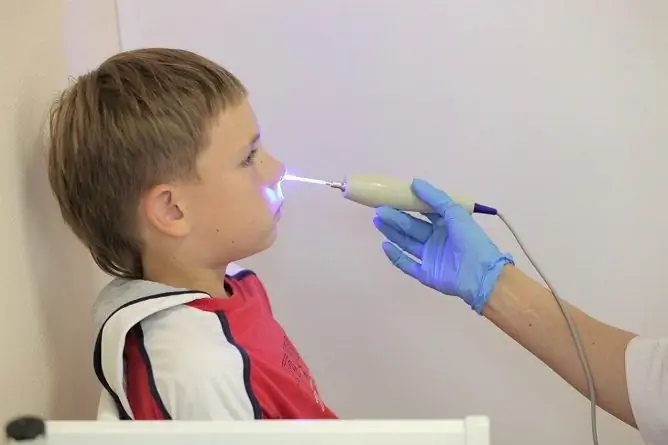- Author Rachel Wainwright [email protected].
- Public 2023-12-15 07:39.
- Last modified 2025-11-02 20:14.
Myalgia
Brief description of the disease

Literally translated from Greek, the term "myalgia" means "muscle pain". As a rule, the disease occurs suddenly and is accompanied by unpleasant sensations during movements or palpation of muscles. In addition to sharp pains, myalgia manifests itself as swelling of the limbs, the appearance of inflamed areas, and a violation of the permeability of the membranes of muscle cells. Contrary to popular belief, symptoms of myalgia can appear even in absolutely healthy people at the moment when, for example, they overextend their muscles during physical labor or sports.
The causes of myalgia:
- flu, ARVI and other infectious diseases;
- arthritis, radiculitis, spinal pathology;
- bruises, sprains;
- overexertion of muscles during work.
Myalgia - symptoms and clinical picture
The symptoms of the disease manifest themselves in different ways depending on the type of myalgia. In modern medicine, it is customary to distinguish:
- fibromyalgia - characterized by pain in the area of muscles, ligaments and tendons. The most commonly affected are the shoulder joints, the occipital region, the lower back and the neck. Unpleasant sensations are especially pronounced when probing muscles;
- myositis or inflammatory myalgia - treatment of patients with such a diagnosis is absolutely necessary, since people suffer from severe pain that occurs with the simplest movements. This type of myalgia has a strong effect on the muscles of the trunk and limbs. In advanced cases, it leads to disability;
- polymyositis - is characterized by pain in the muscles, dystrophy, muscle weakness.
In addition to the symptoms described above, all types of myalgia are inherent: headache, nausea, vomiting, swelling, hyperthermia, impaired cell membrane permeability.
Myalgia - treatment of the disease
The choice of treatment method directly depends on what causes the myalgia. If symptoms appear after colds, then the patient is prescribed antipyretic drugs that not only eliminate high fever, but also muscle pain. A similar tactic is used in all other cases. For example, if myalgia occurs after a nervous overstrain, then sedatives will help get rid of it.

When doctors fail to establish the true cause of an illness, treatment methods are based on eliminating the immediate symptoms. As a rule, patients are prescribed anti-inflammatory nonsteroidal drugs: meloxicam, indomethacin, naproxen, diclofenac. Myalgia, the symptoms of which are especially severe, may require the use of non-narcotic analgesics such as pentalgin, caffetin, or analgin, and they are taken both in the form of ointments or tablets, and intravenously - by injection. As for the ointments, the best effect is observed when rubbed into the inflamed areas of the finalgon, analgos and fastum gel. Menovazine and red pepper tincture also show good results.
Regardless of the form of myalgia, you need to get rid of muscle pain using a set of measures. In particular, if a person is diagnosed with myalgia, treatment involves not only taking medications, but also physical therapy, visiting a massage therapist, physiotherapy procedures and spa treatment.
Let's dwell on massage in more detail. If it is done by professionals, then almost all signs of myalgia disappear in the patient in the shortest possible time, blood circulation improves, swelling of the extremities decreases and their normal work is restored. The first massage sessions are carried out in a gentle mode, but then the load on the inflamed area increases as the intensity of pain decreases. The course lasts 6-8 procedures. Each session lasts no more than 15 minutes, so if you have been diagnosed with myalgia, massage treatment will not take much time and will allow you to get rid of the disease without interrupting your work and household chores.
YouTube video related to the article:
The information is generalized and provided for informational purposes only. At the first sign of illness, see your doctor. Self-medication is hazardous to health!






